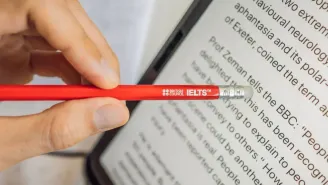Coastal Archaeology Of Britain Reading Answers Passage
Coastal Archaeology Of Britain Reading Answers Passage
Paragraph A. Amongst the most significant recent advances has been the realisation of the species richness of England's coastal archaeology. These vast resources some aspects have long been recognised. Ever since at least the 18th century, the so-called "underwater forests" off the shores of England have piqued the curiosity of classicists; however, it hasn't been until the early 1980s that the historical possibilities of the coast have received significant and methodical research.
Paragraph B. As community awareness has grown, ongoing studies into global warming and its effects on the environment splashed around into a much larger public discussion. The possibility of sea-level rise within the next couple of centuries, and one‘s influence on the performance of coastal areas, have been a specific emphasis for worry. It is possible to identify a multifactorial etiology for this density of exertion and involvement. At about the same time, historians started to realize that anthropogenic and coastal marine erosion-related devastation was having a more detrimental effect on the coastline region's historical assets.
Paragraph C. As the glaciers retreated and the continent was rebalanced, the primary mechanism altering England's physical manifestation throughout the post-glacial period was the elevation of the sea level about the land. The sea's incursion, the disappearance of vast tracts of land that are now buried beneath the North Sea and the English Channel, and particularly the destruction of the land connection between France and England, which also ultimately reduced Britain to an island, must have had a major impact on the lives of our ancient ancestors. However, accounts of the time rarely focus on how prehistoric communities adapted to these environmental shifts. Even though the rise in comparative water level has been very well recorded, we understand next to nothing about the ongoing reshaping of the shoreline, which has been one driver in this. Numerous, mostly silent processes that have not yet received enough research were responsible for this. Future studies will focus heavily on the intricate reconstruction of shoreline histories and the shifting settings that can be used by humans.
Paragraph D. For how much the water level has soared, and the shoreline has receded as a result, a lot of the archaeological material that is presently being uncovered in the coastal region is related to what was originally a farmland occupation, whether this is being deteriorated or disclosed as an underwater land surface. Since its exact location in the coastal region is the product of subsequent, unconnected events, it cannot teach us much regarding previous responses to the water. Its significance will need to be evaluated in light of other relevant discoveries made in dry soil sites. One illustration of how preservation is often great due to physical context is the Prehistoric building found only at Stumble in Essex.
Paragraph E. There is evidence that human manipulation of what would be a coastline setting in some of these submerged land surfaces, and there is analogous evidence all along the modern coast. The evidence is varied and still poorly understood when it does pertain to past human unsustainable exploitation and opportunities provided either by sea or the coastline. We are still not in a situation to provide even rough estimates of the responses to such important questions as the degree whereby the ocean and the shoreline impacted living things live in the past, the proportion of the population that has ever lived near the ocean, or rather or not coastal communities differed from that inland.
Paragraph F. Boats are the most obvious proof that people have used the sea, yet there is still much we don't know about how they are made and used. Unsurprisingly, the majority of the wrecks that are known to exist near our shore date from the post-medieval period. These sites present an unmatched opportunity for research that has thus far mostly gone unused. There is a break in the records of a century that cannot yet be understood when boats resurface, but they are constructed using a radically different technology than the ancient stitched boats, which all appear to date to the 2nd century BC.
Paragraph G. Ships were among the most complex artefacts produced by pre-modern communities, as well as the further study of their manufacturing and use makes an enhanced understanding of historical perceptions toward technological change. Despite the same fact that we know very little about boatbuilding, it must've been a very significant activity along much of our shoreline.
Paragraph H. The volume of industrial production along the coast has become one of the greatest significant discoveries of contemporary research. Among the better-recorded occupations are fishing and salt manufacture, but even here, our knowledge is fragmentary. The degree of prior expenditure in infrastructure for obtaining fish and shellfish was one of the surprises of a recent assessment. Many techniques of fishing will leave little archaeological evidence. In places like Essex and the Bristol estuary, complex wood fish sluice gates have been discovered. These weirs are frequently quite large and sensitive to aerial imagery in the intertidal zone. The manufacture of salt, particularly during the later Iron Age and back To roman periods, has long been acknowledged, particularly in the Thames Estuary, the Solent, and Poole Harbor, but the causes of that industry's downfall and the characteristics of subsequent coast salt works are considerably less clear. Mineral reserves like sand, gravel, stone, coal, ironstone, and alum were all mined. Other businesses were also situated along the coast, because either the natural resources outcropped here or for ease of working and shipping. Although these sectors are not well understood, they occasionally have large, noticeable mainstays.
Paragraph I. The recent study can thus be used to develop an understanding of the variety and significance of the archaeological evidence maintained in the coastal area. However, in early form, it is also becoming clearer how difficult it will be to manage that resource. The issue is brought on not only by the volume and diversity of the archaeological evidence, but by two other factors: the resource is subject to a wide range of natural and human hazards, and there is a complicated network of organisations with interests or power over the coastal region. Renovation of historical sites and old waterfront regions, as well as the growing role of the coastline for the travel and leisure industries, are examples of human hazards that put pressure on governments to build more facilities like marinas. The damage that ferries' growing size has done to intertidal deposits' delicate deposits has also increased. With the expected sea-level rise over the next centuries, parts of the south and east of England pose the biggest natural hazard. Though this is expected to be rather localised, its effect on archaeologists will be far higher than that of the majority of archaeological sites. Therefore, defending one location might just move the threat to another location along the coast. Archaeologists will face a significant difficulty as a result of the preservation of the historical artefacts having to be taken into account over a considerably broader geographic and time frame than is typical for dry ground locations.
Let’s explore the questions and answers of the Coastal Archaeology Of Britain Reading answers passage.
Also Read: IELTS Reading Tips & Tricks 2024: Techniques for Band 9
Coastal Archaeology Of Britain Reading Answers with Sample Questions
Have you read the passage? Now, take the test and find the Coastal Archaeology Of Britain Reading Answers! Try to answer these questions by yourself before you sneak a peek at the answers given below.
Check Out Top 20+ IELTS Reading Practice Test Questions with Answers
Below are some top 20 free IELTS Reading Practice test online questions with detailed answers to enhance your IELTS preparation online. We have provided sample passages for each test type for your reference.
- What Is Exploration Reading Answers
- Effects Of Noise Reading Answers
- The Discovery Of Baby Mammoth Reading Answers
- The Dead Sea Scrolls Reading Answers
- The Ring-Tailed Lemur Reading Answers
- Why We Need To Protect Polar Bears Reading Answers
- Nutmeg A Valuable Spice Reading Answers
- What Is Meaning Reading Answers
- Cutty Sark Reading Answers
- The Step Pyramid Of Djoser Reading Answers
- South Pole Adventurer Reading Answers
- The Future Of Work Reading Answers
- Ambergris Reading Answers
- Trees In Trouble Reading Answers
- Could Urban Engineers Learn From Dance Reading Answers
- The Flavour Of Pleasure Reading Answers
- The Value Of A College Degree Reading Answers
- Why You Should Delegate Tasks To Team Members Reading Answers
- Corporate Social Responsibility Reading Answers
- Forest Management In Pennsylvania USA Reading Answers
- Making Time For Science Reading Answers
- The Power Of Play Reading Answers







